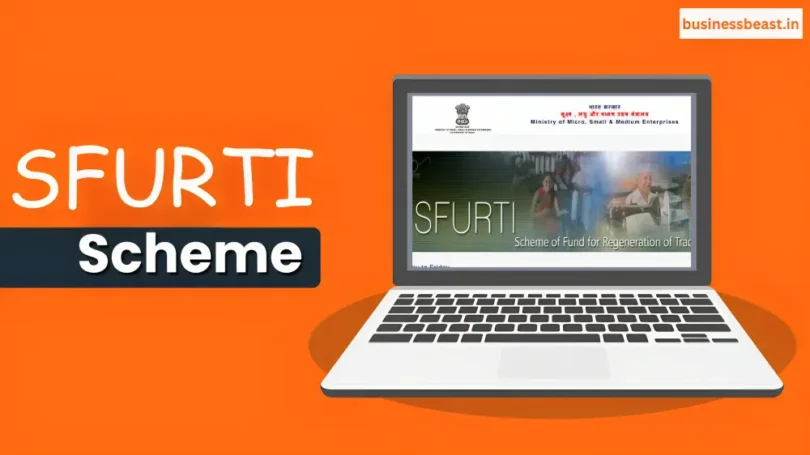Traditional industries have long served as the foundation of rural economies in India, a diverse country with a rich cultural legacy. The government’s dedication to empowering and maintaining these traditional industries is demonstrated by the Scheme of Fund for Regeneration of Traditional Industries (SFURTI). The Ministry of Micro, Small, and Medium Enterprises (MSME) launched SFURTI Scheme to increase these industries’ competitiveness, expanding their market reach, and creating jobs. Even with the use of contemporary techniques, the SFURTI Scheme is firmly committed to conserving and advancing India’s traditional crafts and abilities.
What is the SFURTI scheme?
The Indian government launched the Scheme of Fund for Regeneration of Traditional Industries (SFURTI) to encourage traditional industries. The Ministry of Micro, Small, and Medium Enterprises (MSMEs) introduced the program to increase these industries’ competitiveness, particularly in rural areas.
India is home to a sizable artisan population that relies on age-old sectors like coir and khadi. In general, this program helps laborers, business owners, artists, and so forth.
Key Features of the SFURTI Scheme
- Cluster Development Approach: The SFURTI program uses a cluster-based strategy to support the growth of conventional industries. By uniting artisans, business owners, and auxiliary organizations in a specific region, clusters allow members to work together, exchange resources, and take on shared problems. Within traditional industries, this strategy encourages sustainable growth, increases competitiveness, and creates synergy.
- Financial Assistance: The program provides funding to support cluster development in several ways. This includes financing for the construction of shared spaces, offices, and raw material banks, among other infrastructure-related projects. Additionally, it offers funding for projects aimed at improving skills, upgrading technology, developing capacity, and marketing. By filling in important gaps and helping artisans and business owners expand their operations, the provided funding seeks to empower these groups of people.
- Market Linkages: The SFURTI initiative, which acknowledges the value of market access, is centered on creating strong connections between traditional industries and markets. Collaborations with exporters, e-commerce sites, market aggregators, and other market intermediaries are made easier by it. Through these collaborations, traditional craftspeople and business owners can reach new markets, grow their clientele, and increase the demand and visibility of their goods. SFURTI helps artisans to obtain better prices and long-term market opportunities by fortifying market connections.
- Holistic Development: The program encourages artisans and business owners to embrace sustainable practices, diversify their product offerings, and innovate in design and production methods in addition to providing financial support. This holistic development within traditional industries is facilitated by the program. Furthermore, it underscores the significance of skill development and capacity-building initiatives in equipping craftspeople with contemporary skills, instruments, and methods. It guarantees the long-term viability and expansion of traditional industries by promoting holistic development.
Benefits of the SFURTI Scheme
- Enhanced Entrepreneurship: In rural areas, the program serves as an accelerator for the growth of entrepreneurship. Through the provision of financial support, opportunities for skill enhancement, and infrastructure development, it enables people to start and grow their traditional businesses. This encourages self-reliance and entrepreneurship in rural communities, which increases the creation of jobs and revenue.
- Economic Empowerment: In rural India, the SFURTI scheme is a major factor in economic empowerment. Local economies are revitalized through the scheme’s support of traditional industries. For artisans, weavers, and other competent people, it offers channels for generating revenue and job opportunities. The economic stability and prosperity that follow raise living standards and lessen poverty as they have a knock-on effect on the community’s overall development.
- Market Access: The significance of market access for traditional industries is acknowledged by the SFURTI scheme. It makes it easier for artisans and business owners to reach both domestic and foreign markets by facilitating product branding, marketing support, and market connections. This exposure increases the visibility and demand for traditional products while creating new sales channels and customer bases. The program helps traditional industries grow sustainably, increase sales, and improve profitability by bridging the gap between artisans and consumers.
- Technological Improvements: SFURTI concentrates on technology advancements and innovations to stay up with changing market demands. It makes it easier for traditional industries to adopt new equipment, techniques, and technologies. The program increases the competitiveness and effectiveness of rural businesses by encouraging the integration of cutting-edge strategies like enhanced production techniques, quality control procedures, and product diversification. Thanks to this technological revolution, artisans and business owners can now meet global quality standards, increase the scope of their product offerings, and reach new markets.
SFURTI Scheme Eligibility
- Semi-Government institutions
- Panchayati Raj institutions (PRIs)
- Non-Government organizations (NGOs)
- Field functionaries of State and Central Govt.
- Institutions of the Central and State Governments
How to Apply for SFURTI Scheme?
- A proposal must be written, and funding must be requested.
- You must deliver the proposal report to the KVIC office in your area as soon as it is completed.
- Next, KVIC reviews the proposal report.
- The offices at the State and Zonal levels then review the request and proposal.
- The proposal is finally submitted to the steering committee for final approval after it has been verified.
- The loan is approved once the proposal has been approved by the steering committee.








Leave a Comment